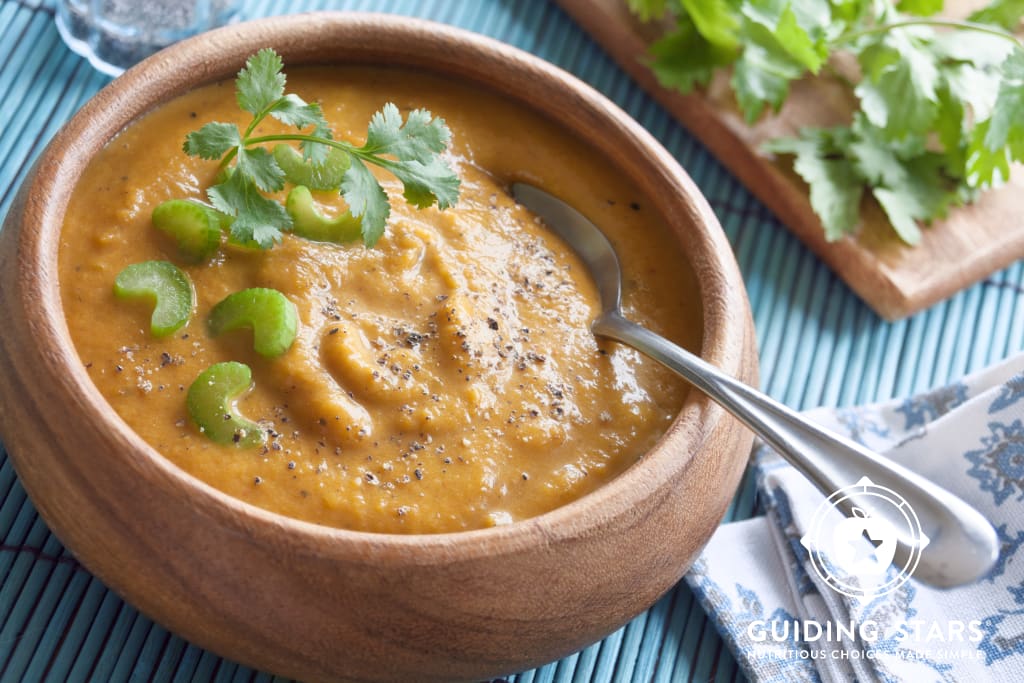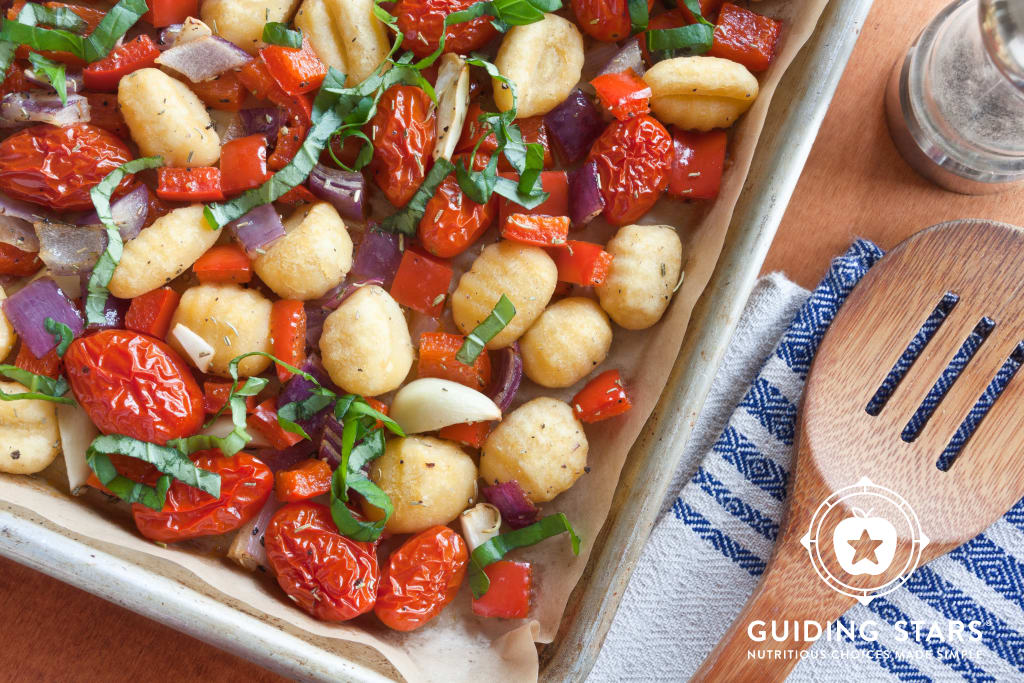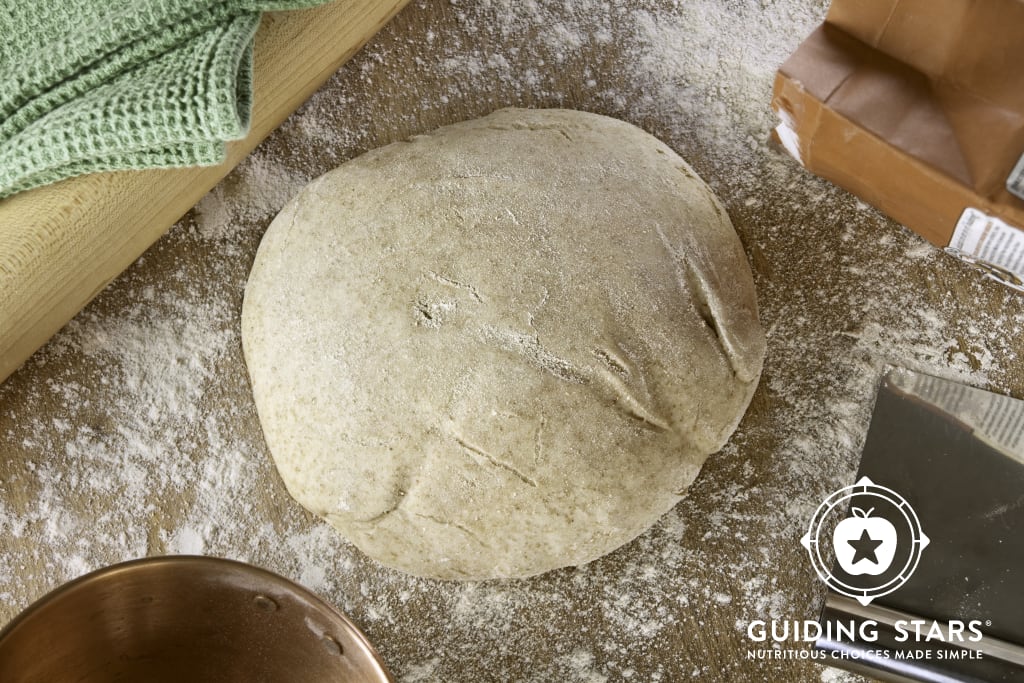Hi, folks. My name is Melissa. I tend to let my personal voice take a back seat when I write for Guiding Stars to prioritize being helpful and informative, but for the purpose of this post, I think a little background might be helpful. I’m the editor for the Guiding Stars blog, and I’m married to the photographer who shot the vast majority of the Guiding Stars recipe photography to date. As in all things, Guiding Stars values integrity and transparency, which means that the recipe photos in the database are actually all pictures of the more than 1,200 recipes in the database. What that has meant for my household, food-wise, is that for years, we have always had a really weird assortment of veggie odds and ends and leftover bits of whole grains or beans that we needed for a specific recipe that was outside my personal culinary comfort zone.
In short: I’ve gotten really practiced at dealing with the challenges involved in cooking to clean out a pantry or working with ingredients that are unfamiliar to me. I know many of you are experiencing these cooking challenges in a freshly unavoidable way as grocery stores have uneven supplies and stay-at-home mandates are making us try to use up what’s on hand. I have some ideas that may be of help.
Start with MyPlate.
I find the MyPlate graphic to be an incredibly useful tool for thinking about how to balance what’s going into a dish. About half the food on your plate should be produce. The other half should be divided between grains (preferably whole) and protein (preferably lean). And you want a little bit of fat in there, preferably monounsaturated. Try to pull out something from each category and think of what they need to work together.
Example:
I had squash puree from my garden, frozen spinach, and a bag of wheat berries to use up. I always try to have onions on hand, and I had an apple that was going wrinkly, so I used those with a little olive oil and chicken broth to turn the squash into a quick soup. I thawed the spinach, dried it, and stirred it into the soup. I cooked up the wheat berries (any chewy grain would have been excellent) and used them to top the soup. The meal was missing protein and fat, so dug around and found some blue cheese to throw on top. I spiced this with a bit of ginger, but curry powder, garam masala, or even pumpkin pie spice would have been awesome.
Whether or not my dish was low enough in sodium and saturated fat to earn Guiding Stars would probably be dependent on just how much blue cheese each individual added on top, and it might have been a little low on protein, but it was delicious and filling.
Thai Butternut Squash Soup
My soup was much simpler than this one, but this recipe gives you an idea of process. Sweet potato or canned pumpkin would also work.
View recipe »Get roasting.
I have yet to meet a vegetable that wouldn’t play nicely with other vegetables in a roasting pan. Well, lettuce might fair poorly, but on the whole, if you’ve got a frustratingly weird assortment of small bits of fresh vegetables, the best thing you can do most of the time is chop them evenly into bite-sized pieces, toss them with a little olive oil, herbs, spices, and just a little salt and roast them on a sheet pan in a 400ºF oven for 15-45 minutes. 15 minutes for quick-cooking vegetables like cauliflower, 45 minutes for root vegetables and squash. If you have vegetables with wildly different cooking times, split them out onto baking sheets by probably cooking time, or organize them in tidy rows so you can spoon the fast-cooking veggies off easily.
Example:
Literally, you can do this with anything. Frozen veg works for this too. The combination I was most dubious about was cabbage, radishes, garlic, onion, cherry tomatoes, and squash…it was brilliant, though. We served it with some leftover chicken and quinoa, and it was delicious.
Roasted Gnocchi & Vegetables
This recipe tosses some gnocchi in there, which is delicious, and might be slower to disappear from the shelves than some more popular starches.
View recipe »Will it pizza?
Yes. It will pizza. That’s what I’ve learned. Start with a whole-wheat dough. Find something flavorful and wet to function as a sauce (pesto, olive oil, squash, tomato sauce). Top with generous amounts of veggies and lean protein. Finish off with just a little bit of cheese. (Trust me: if you’ve got enough flavor in the toppings and sauce, and if you put the cheese over the toppings instead of under, you’ll need less cheese than you might think.) Try to lean on spice and herbs and preparation techniques (like roasting) for flavor to help keep your salt use low, as that’s an easy pitfall with pizza. Use the baking instructions in your crust recipe. I typically do 20-30 minutes in a 400ºF oven, but I like a pretty thick crust.
Example:
We often end up with too much filling for enchiladas. You can make rice bowls out of it, of course, OR…you could pizza it. Make a big batch of homemade dough and freeze the extra in ready-to-go portions for later meals. Use low-sodium enchilada sauce as the sauce. Toss cooked beans (pinto or black are especially good), corn, chopped onion, garlic, and tomatoes with a bit of chili powder to taste and spread over the sauce. Top with a little of whatever cheese you have on hand. Crumbled goat cheese would be my first pick, but just about anything goes.
Whole Wheat Pizza Dough
Make this in a big batch and freeze the extra for later. Thaw on the counter in the morning for use with dinner.
View recipe »Be flexible.
I’m ending with this tip because it’s where I’ll pick up next week, as there’s a lot to be said on the topic of how, specifically, to be flexible. But in general, if you’re working with foods you’ve tried before, trust your instincts in similarities to make substitutions. Use the internet to figure out what a food is like if you haven’t worked with it before. You might end up with some dishes that your family is grumpy about eating, but then again…you’re just as likely to discover new combinations your family will beg you to make again.


